
The effect of various epidemics in urban design over time is well-documented in books and academic articles. As cities were crucial to the development of civilization in all its aspects, since old times the agglomeration of people and domesticated animals configured also the ideal scenario for the spread of diseases. Trading routes, migration and even war were responsible for bringing infection across regions and continents.
Plagues, cholera, smallpox, yellow fever and others have charged a high toll in human lives throughout history and left their signature in our culture, beliefs and the built environment. As science progressively evolved their understanding of the actual causes of diseases and the conditions favoring their dissemination, urban interventions were planned and undertaken to avoid new outbreaks. As cholera outbreaks killed tens of thousands of people in London in the 1850s, the city’s sewerage system was expanded and vast areas of the Thames’ marshland were converted into paved walkways, covering pipelines that brought wastewater away from drinking supplies [1].
On top of preventing pedestrians to be run over, sidewalks segregated by curbs were also intended to avoid the contact of people to human dejects, commonly discharged in streets in cities like New York during the 19th century. Boulevards were introduced in Paris to increase the space available for circulation during the Hosmannian period and this design inspired cities all around the world. Many cities followed in the beginning of the 20th century with sanitarist or hygienist urban interventions. Building regulations were established to guarantee adequate ventilation and insolation and avoid diseases such as tuberculosis, responsible for seasonal outbreaks in big cities.
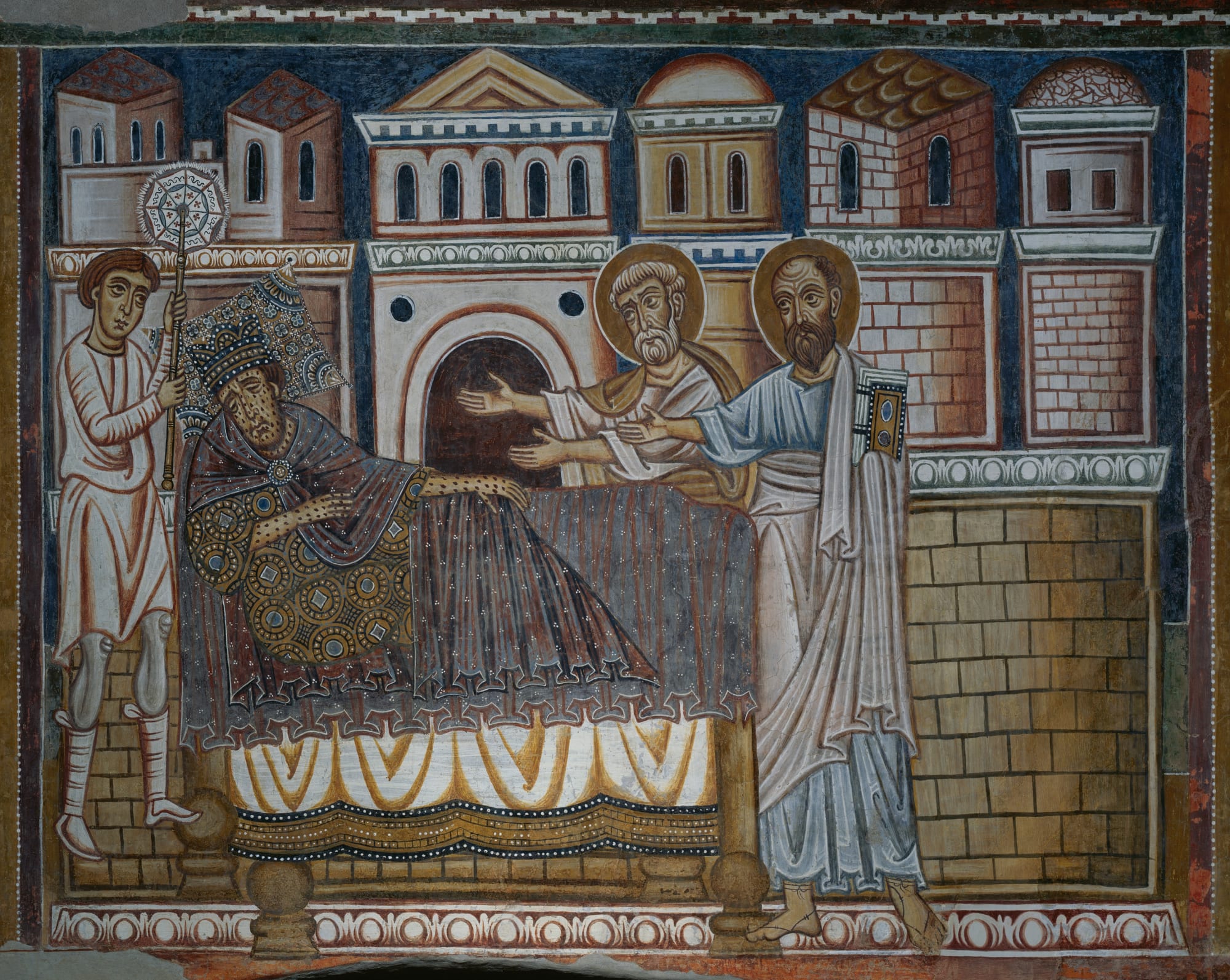
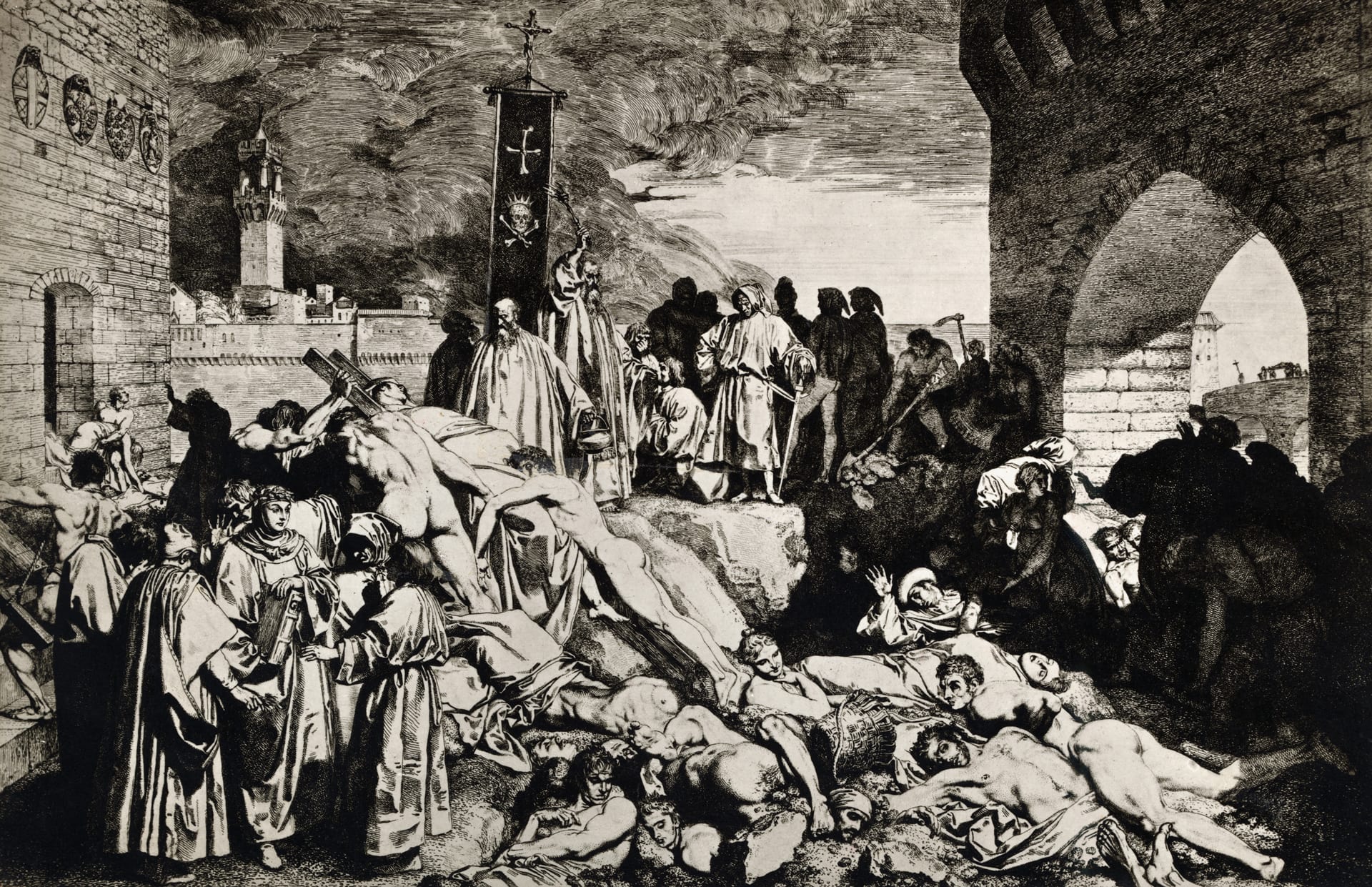
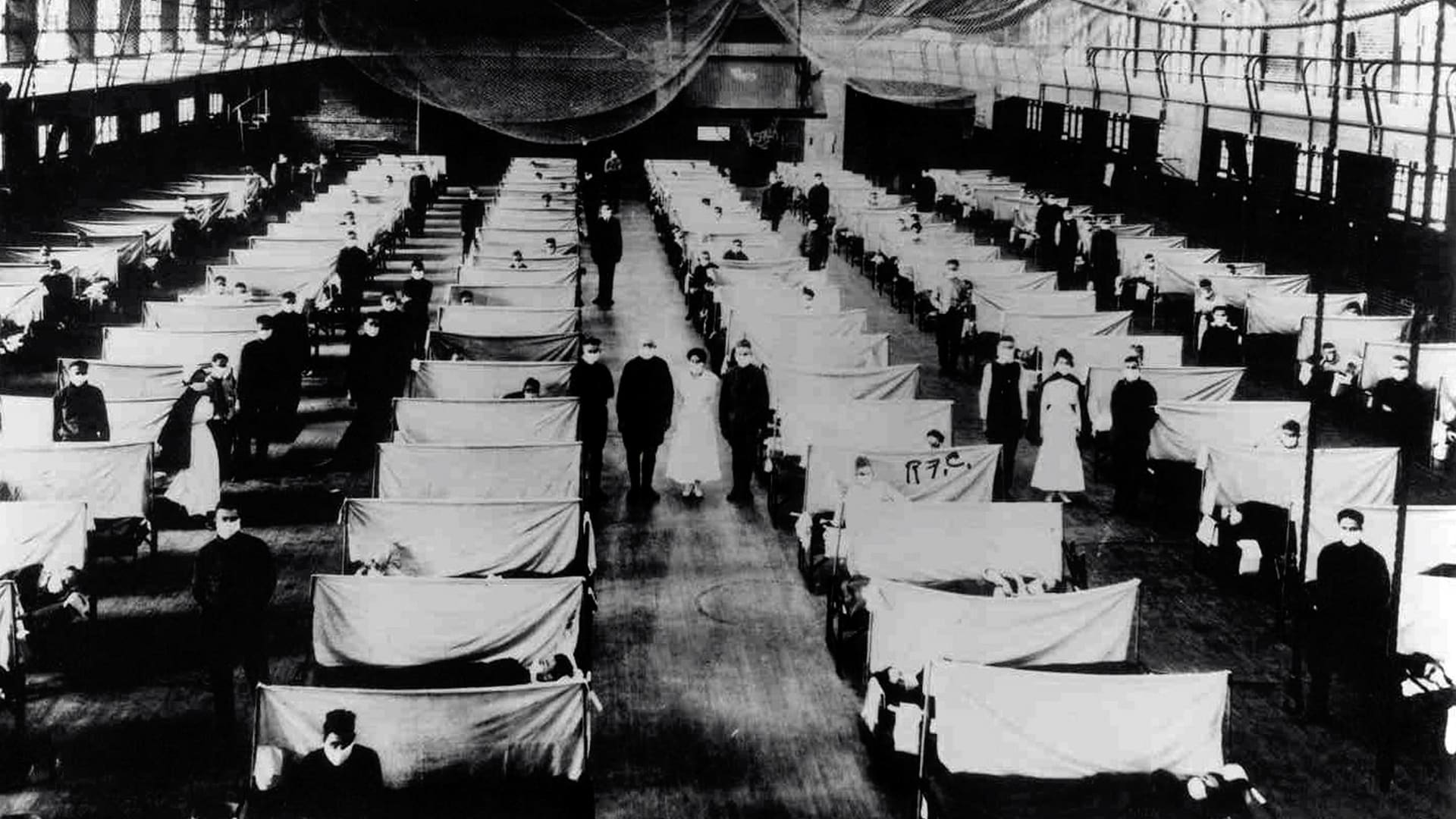
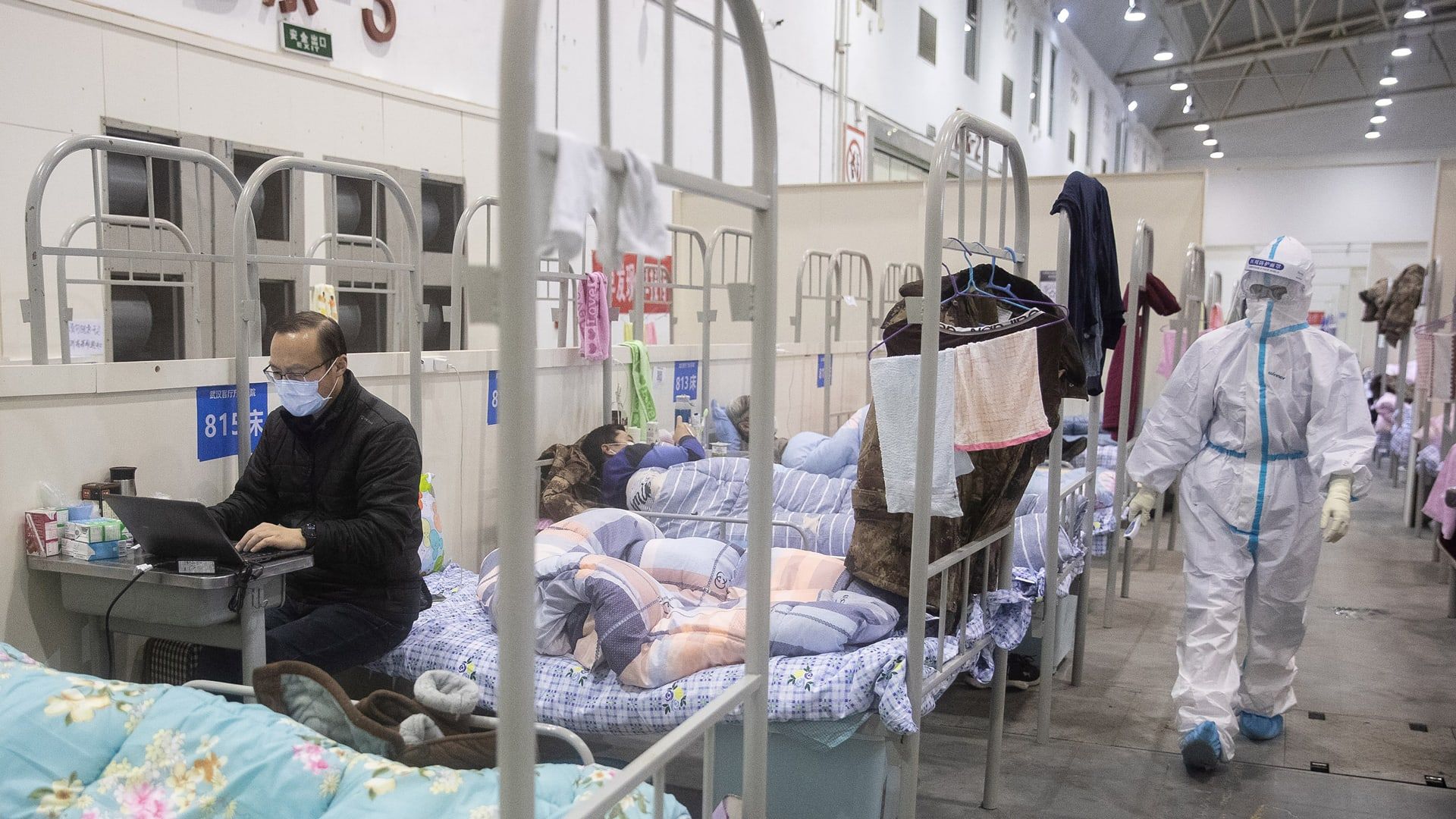
The Great Influenza Epidemic, also known as the “spanish flu”, was one of the deadliest in human history, taking millions of lives between 1918 and 1920 in four sucessive waves. Prior planning, clear instructions and a consistent and transparent advice to the public were later considered to be useful in decreasing the number of cases and deaths [3]. In the next decades, the concerns about public health and the importance of green space and urban renovation got into a new level with the CIAM (Congrès Internationaux d'Architecture Moderne), which left a persistent and revolutionary mark on the way cities are designed during the whole century [4].
One hundred years later, Covid-19 spreads across the world with unprecedented speed. Even with sudden travel restrictions, the virus came from Asia to Europe, Africa and the Americas. In a matter of weeks, governments all around the world were enforcing lockdowns or similar partial restrictions as a measure to contain the rise in the number of deaths. In a matter of months, all kinds of activities leading to agglomeration like commerce, concerts, festivals and parties were under severe restrictions.
During this time, activities we always took for granted such as going to a restaurant, bringing your kids to school, visiting family or even going outside were not possible anymore. Our world became our homes and our cities became as empty as never before. The Internet enabled life to partially go. Society found their way to adjust and reinvent themselves with remote working, live streamed concerts and online shopping. As new infection waves kept coming, the emergency measures became long-term and we soon realized things wouldn’t come back to normal anytime soon. In several cities, solutions arised in order to bring typical indoor activities to the outside and create more space for pedestrians and cyclists in the streets.
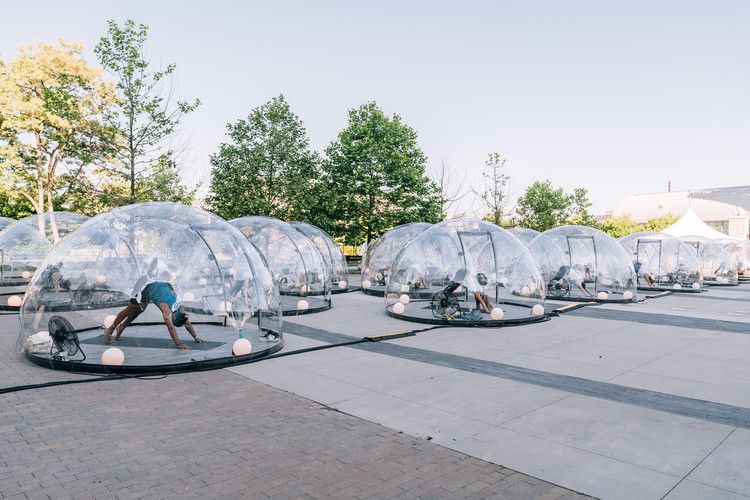
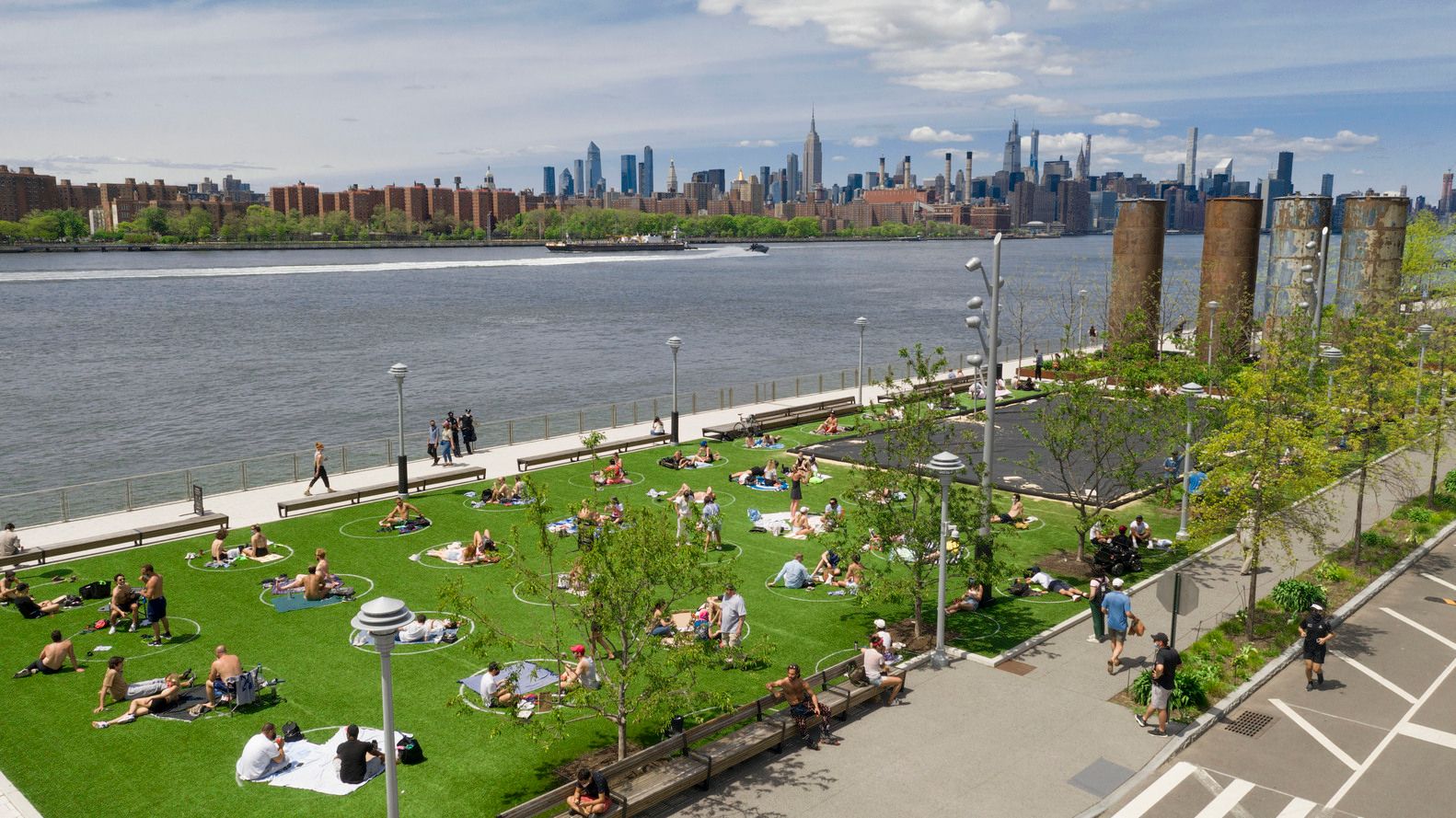
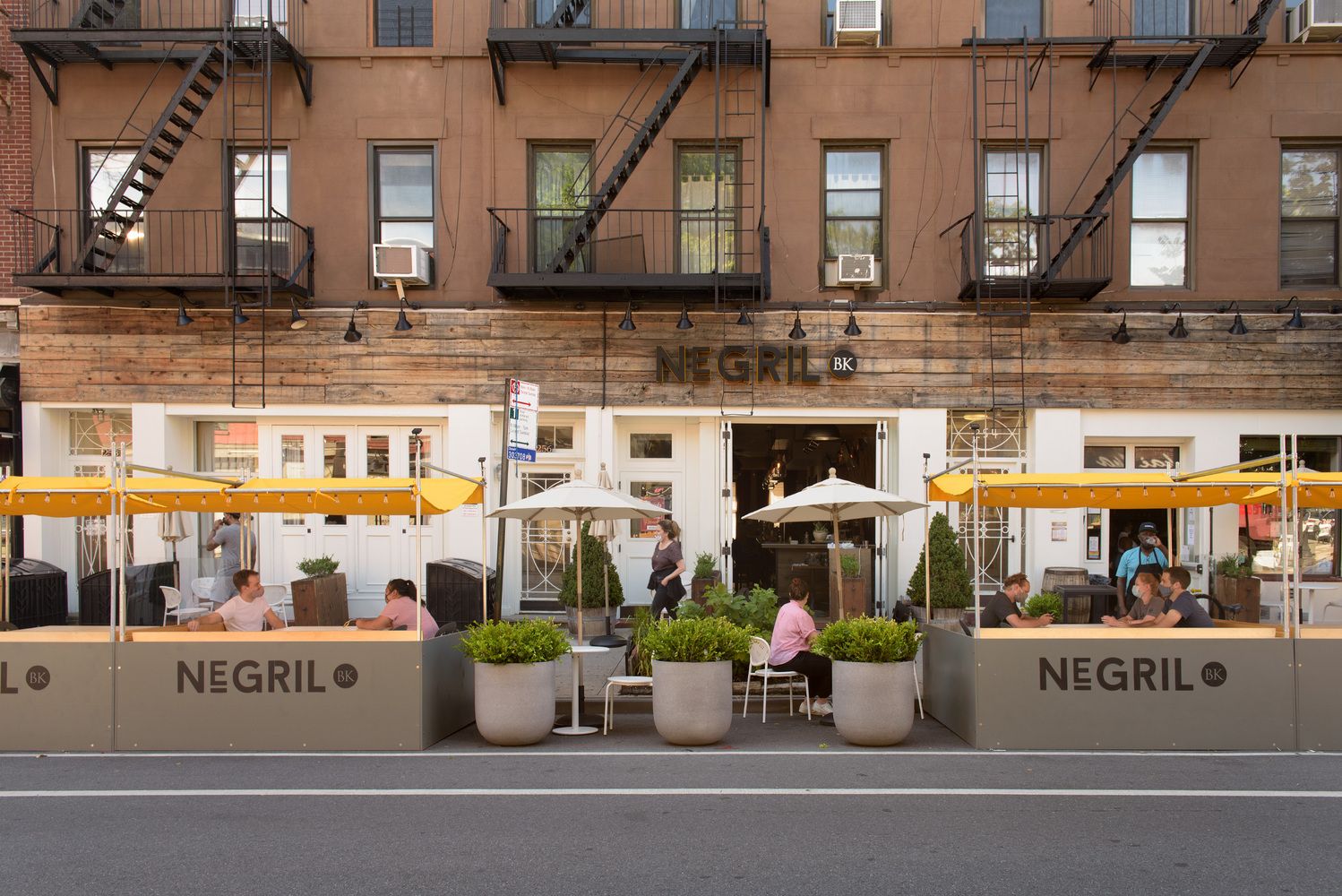
It is worthy to mention that the pandemic impacted different segments of society in a different way. Just as the mortality rate among African-Americans during the 19th century tuberculosis epidemic was greater than among whites [6], many countries reported that mortality rates tended to be higher among minorities and low-educated workers during the Covid-19 epidemic [7]. Housing and work conditions played an important role in both cases. The response to epidemics also impacts people differently. In Rio de Janeiro, the urban interventions to guarantee a healthy living environment are known for displacing thousands of low-income inhabitants from the central area, which found in the first favelas by the hills their only shelter [8].
Expected to be the end of these harsh times, vaccines helped to bring a part of the world closer to normality. But unevenly distributed, they tended to generate more inequality. If for the first time in a century, the whole world seemed to be on the same page in March 2020, soon enough paths diverged. Money flowed from emergent and developing countries to developed countries, considered to be more secure in a time of uncertainties. As generous development programs rose in wealthy countries, the rest of the world witnessed budget cuts that led to a shutdown in science, education and culture. Infrastructure is cracking and public transportation systems are close to going bankrupt in many cities. Any post-pandemic policy should consider this larger gap between rich and poor both at a local and international level.
In order to better understand this moment and be able to propose solutions for what comes next, a survey was conducted by the author, the architect Lena Antonowitsch and the artist Kimia Pishdadian. Accessible by a link released on the Instagram profile @transitionspace and by a QR-Code in posters at bus stations in Paris and in Eindhoven, it contained basic questions regarding people’s behavior after the pandemic and their expectations. The results of this survey were not intended to be statistically significant, but rather to provide a glimpse into what people feel at this moment and to ground proposals during the Cross-Creathon Paris-Eindhoven.
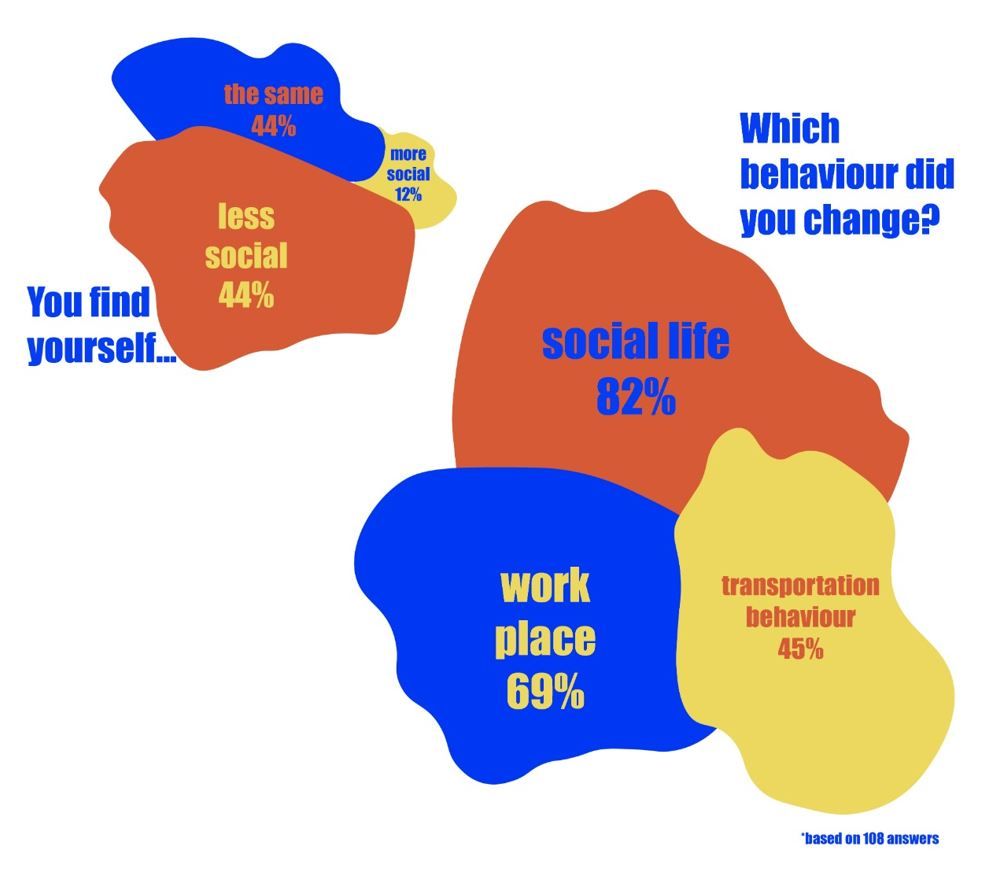
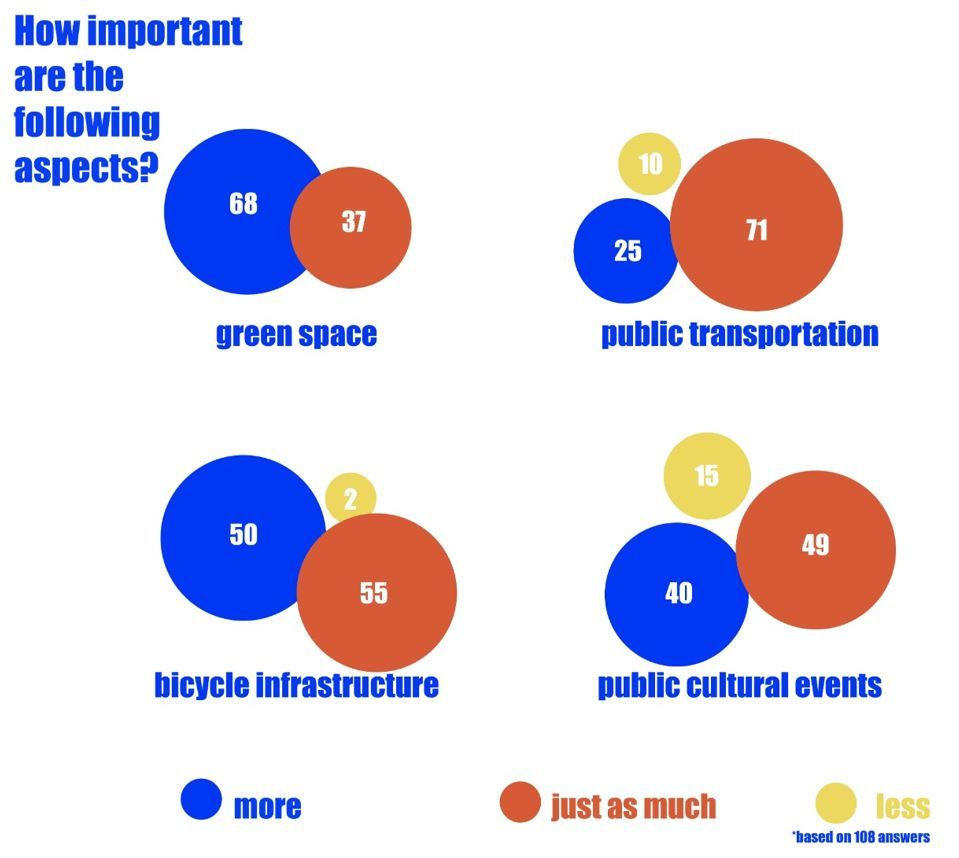
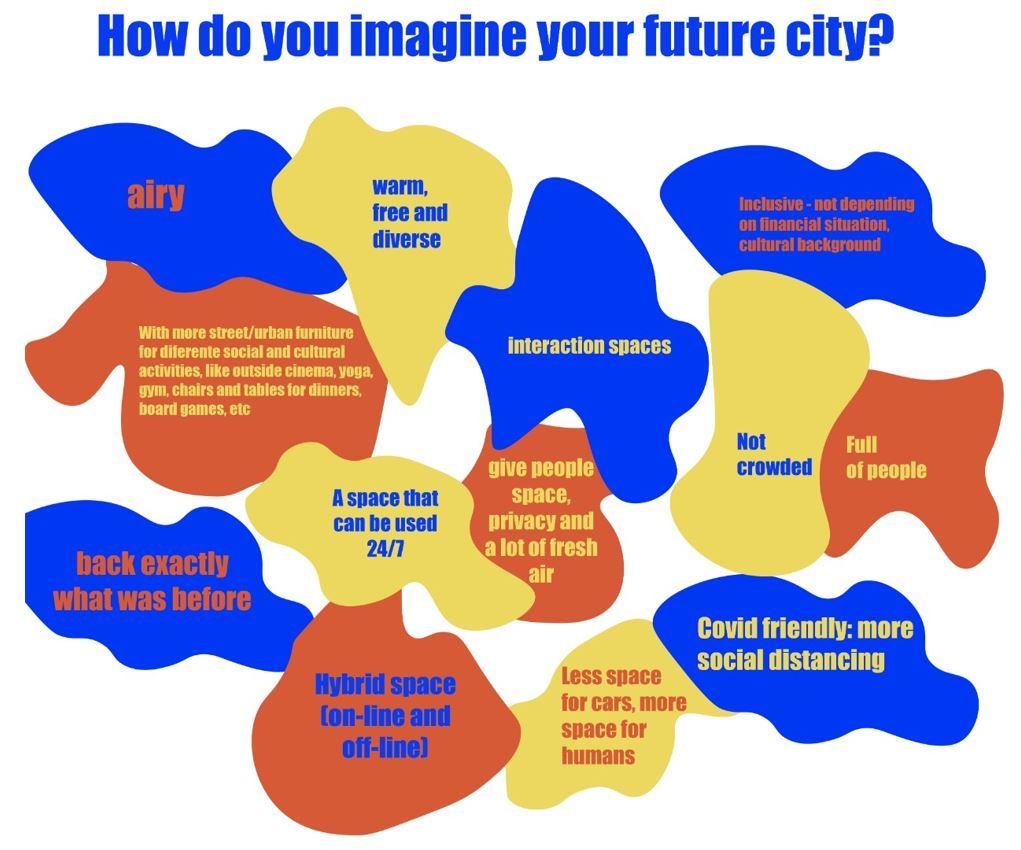
According to the survey, most people were found to have changed their work, transportation and social behavior after the pandemic. In general they consider themselves less social than before. At scale, changes of behavior have the potential to impact cities and need to be taken into account by decision makers. When asked about the importance of some urban features in the post-pandemic context, green space and bicycle infrastructure, most respondents considered them more important than ever. It is concerning that people are less enthusiastic about public transportation. Even if understandable, it raises a flag on how mass mobility can be solved in a context where people are not comfortable to agglomerate, since the very success of public transportation is measured by its high ridership. When asked about how they envision their future city, there were plenty of diverse ideas like more interaction spaces, more social distancing, hybrid spaces (on-line and off-line) and more 24/7 spaces.
Around the world, cities are trying to deal with the new reality. After around 700,000 people left London, the city needs to reverse the Covid exodus to respond to a severe labor shortage [9]. Office space is being reimagined in cities like São Paulo and New York City, even making space for creating new housing units [10, 11]. According to Aruj Haider, Chief Digital and Innovation Officer from Westminster City Council, “as the recovery begins, we must not forget that the pandemic has shone a light on the importance of tailoring urban environments to the needs of people they serve – the successful cities of the future will be those that place their people first” [12].
Would there be a way to make our cities pandemic-proof or at least better prepared for outbreaks in the future? According to Marcos Martínez, some interventions are capable of improving city resilience in this aspect: reduce pedestrian density by increasing the space dedicated to them, promoting cities that concentrate main services and activities in a 15-minute walkable radius, provide conditions for remote work whenever possible and create more non-hospital health centers [13]. Technology can also be used to make our cities prepared for emergency situations. In places such as Luxemburg and Moscow, digital twins were used to monitor the epidemic and plan a more effective response in a timely manner [14, 15]. On the other hand, if disaster measures characterized by citizen control become normalized, our societies may risk to approach authoritarianism, raising debates over the power such surveillance hands to corporations and governments [16].
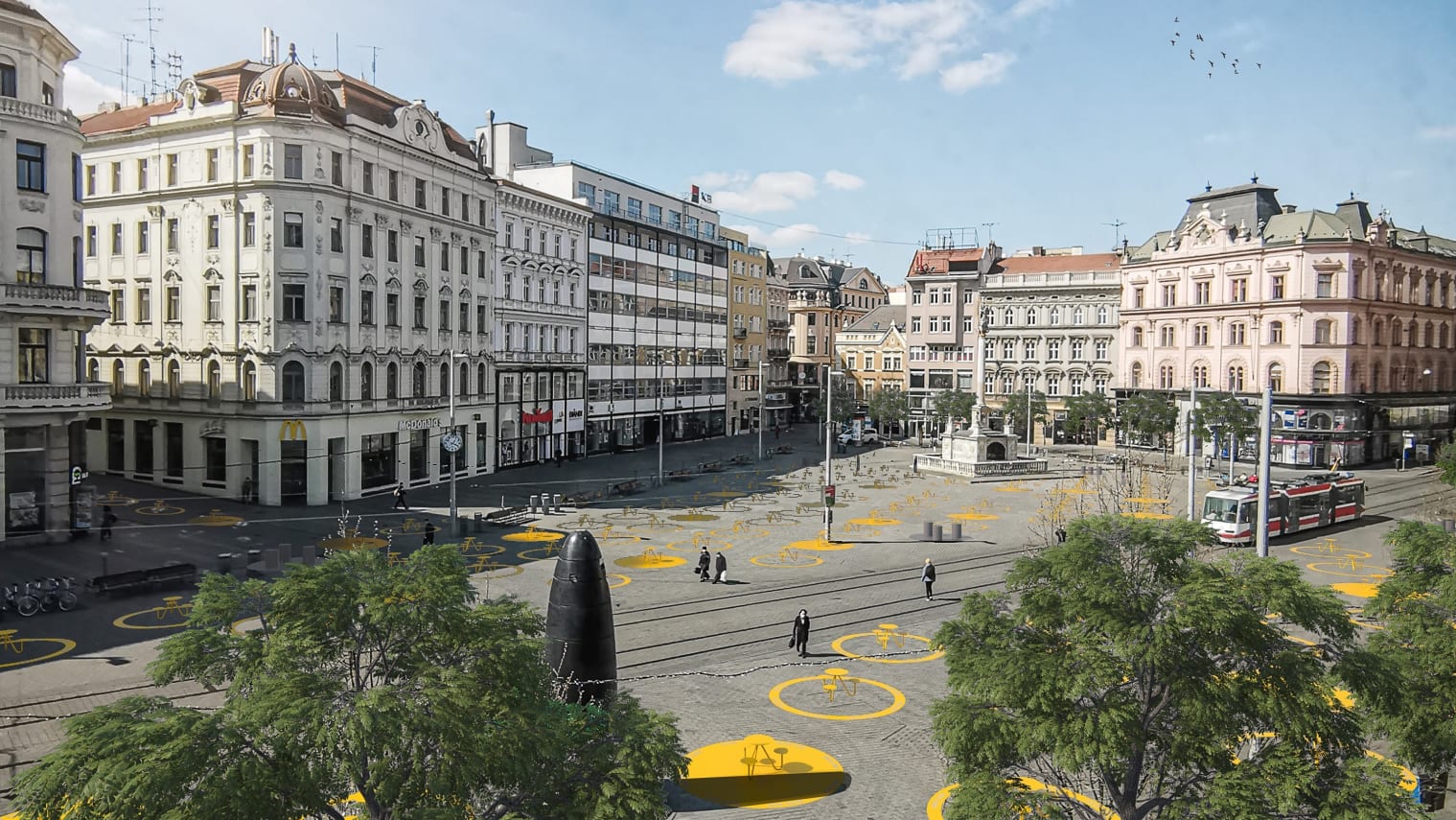
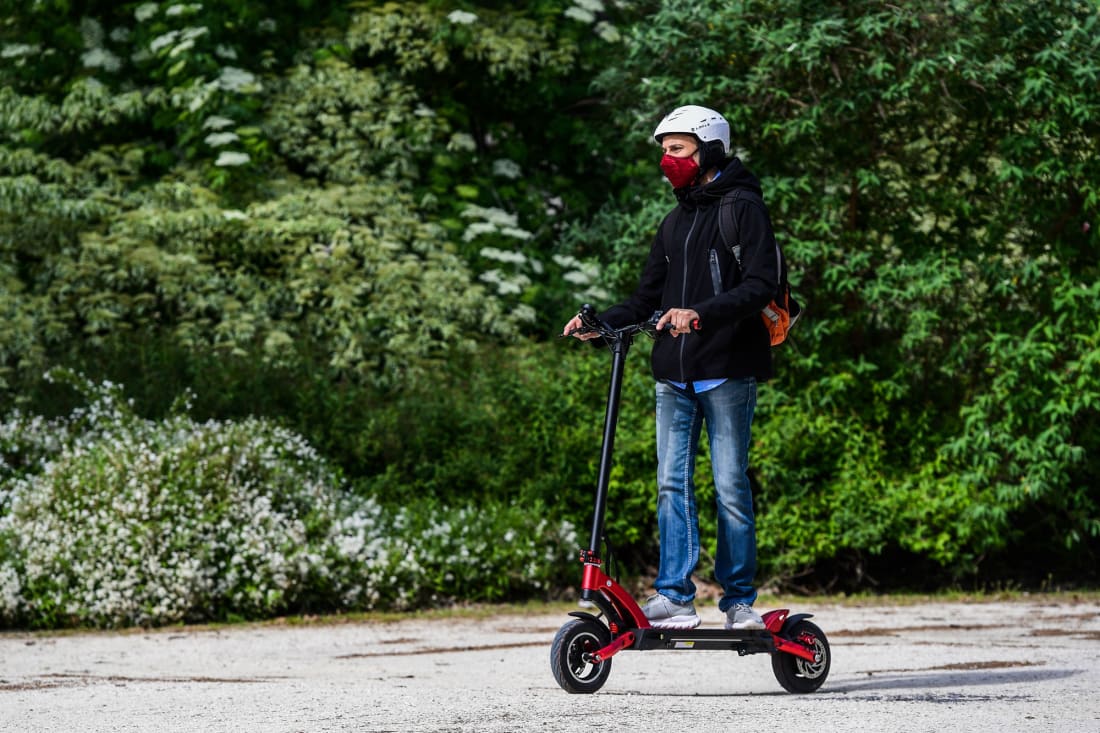
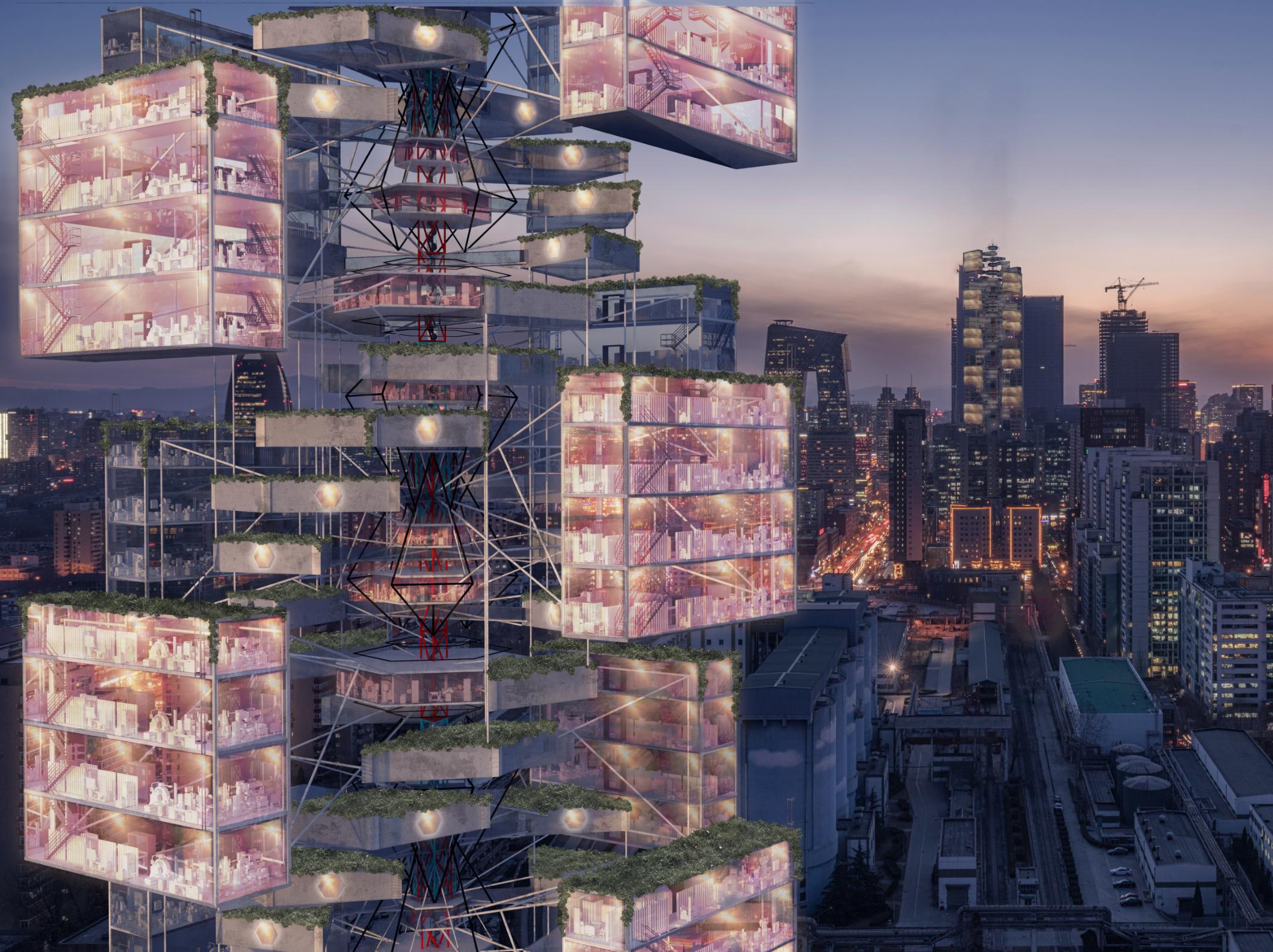
More than standard solutions for cities, the moment requires reclaiming the trust in public participation processes, listening to citizens’ proposals and being aware that we are still in a transition period. Only time will tell which behavior changes will soon be forgotten and which will be with us for years to come as part of the “new normal”. Ideally the capacity and expertise governments built in the last years will be turned into public policies that favors cities based on equality of opportunities and citizen well-being.
References
[1] CGTN (2020) COVID-19 and the city: How past pandemics have shaped urban landscapes
[2] The History Channel (2020) Pandemics that changed History
[3] B. Nelson & D. Kaminsky (2021) History repeated: Applying lessons from the 1918 flu pandemic
[4] J. Gold (1998) Creating the Charter of Athens: CIAM and the functional city, 1933-43
[5] Archdaily (2020) How Has Public Space Changed in 2020?
[6] J. Zelner, C. Muller & J. Feigenbaum (2017) Racial inequality in the annual risk of Tuberculosis infection in the United States, 1910–1933
[7] C. Cronin & W. Evans (2021) Excess mortality from COVID and non-COVID causes in minority populations
[8] WRI Brasil (2021) Planejamento urbano e epidemias: como doenças do passado transformaram as cidades
[9] Financial Times (2021) London leavers’ return vital to recovery after Covid exodus
[10] Financial Times (2021) Developers rethink the office after coronavirus
[11] Folha de São Paulo (2021) SP pós-pandemia terá de lidar com esvaziamento de escritórios e excluídos do home office
[12] SmartCitiesWorld (2021) Putting people first: the key priorities for a post-pandemic smart city
[13] Tomorrow.City (2021) Pandemic-proof cities: the key to urban development models of the future
[14] Luxembourg Trade & Invest (2021) A nation-wide digital twin
[15] Smart City Moscow (2021) Digital Twin of Moscow
[16] The Guardian (2020) Cities after coronavirus: how Covid-19 could radically alter urban life
[17] CNN (2020) Our cities may never look the same again after the pandemic
